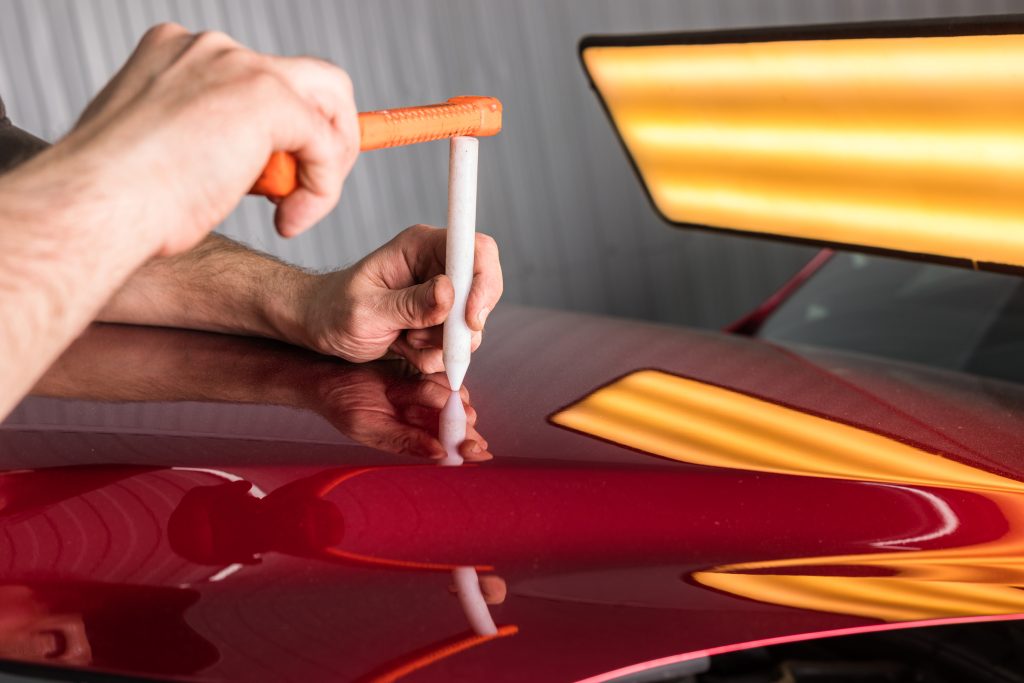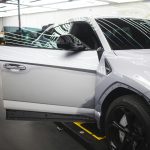Paintless Dent Repair (PDR) has revolutionized the way we address minor and major dents in vehicles. However, despite its growing popularity, several myths and misconceptions about PDR persist. This blog post aims to debunk these myths, providing you with accurate information to make informed decisions about your vehicle repairs.
Myth 1: PDR is Only for Minor Dents
Myth Explanation: Many people believe that PDR can only fix small, superficial dents and is ineffective for larger damage.
Debunking the Myth:
While it’s true that PDR is highly effective for small dents, it can also handle a range of dent sizes, provided the paint surface is intact. PDR specialists use advanced tools and techniques to access and repair dents from the inside out, restoring the metal to its original shape. For instance, hail damage, door dings, and even some collision dents can be repaired using PDR, as long as there is no paint damage or cracking.
Supporting Evidence: Case studies and testimonials from PDR professionals show successful repairs on larger dents. For example, a dent the size of a golf ball or even a baseball can often be repaired with PDR, saving time and money compared to traditional methods.
Myth 2: PDR is Not as Durable as Traditional Repairs
Myth Explanation: Some vehicle owners think that PDR repairs are less durable and more prone to future damage than traditional methods.
Debunking the Myth:
PDR maintains the vehicle’s original paint and structural integrity, often making it more durable than traditional repairs that involve fillers and repainting. The factory paint on your vehicle is applied under controlled conditions and is highly durable. PDR preserves this original paint, ensuring the repair area maintains the same resilience as the rest of the vehicle.
Supporting Evidence: Expert opinions and industry studies indicate that PDR repairs can last the lifetime of the vehicle. The techniques used in PDR ensure that the metal is restored to its original condition without compromising the paint or structure.
Myth 3: PDR is More Expensive
Myth Explanation: There’s a misconception that PDR costs more than traditional repair methods due to its specialized nature.
Debunking the Myth:
In reality, PDR is often less expensive than traditional bodywork because it requires fewer materials and less labor. Traditional methods involve sanding, filling, and repainting, which are labor-intensive and time-consuming. PDR, on the other hand, can be completed more quickly and efficiently, translating to lower costs for the vehicle owner.
Supporting Evidence: Cost comparisons from various repair shops show that PDR can save vehicle owners up to 50% compared to traditional methods. Additionally, because PDR preserves the original paint, there are no concerns about mismatched paint colors or fading over time.
Myth 4: PDR Can Damage the Paint
Myth Explanation: Some people fear that PDR might damage the vehicle’s paint, leading to further repairs.
Debunking the Myth:
PDR is designed to work without affecting the paintwork. Skilled PDR technicians use precise tools and techniques to manipulate the metal from behind the dent, ensuring that the paint remains undisturbed. This meticulous approach protects the paint and eliminates the need for repainting.
Supporting Evidence: Insights from PDR technicians highlight their extensive training and use of specialized tools that prevent damage to the paint. The non-invasive nature of PDR ensures that the vehicle’s original finish is preserved, which is a significant advantage over traditional methods.
Myth 5: PDR is Not Effective for Older Vehicles
Myth Explanation: There is a belief that PDR is only suitable for newer cars with modern paint jobs.
Debunking the Myth:
PDR can be used on both older and newer vehicles. In fact, it is particularly beneficial for older cars because it preserves the original paint, which might be difficult to match if traditional repainting methods were used. The flexibility and precision of PDR techniques allow for effective repairs regardless of the vehicle’s age.
Supporting Evidence: Examples of successful PDR on older models demonstrate its effectiveness. Many classic car enthusiasts prefer PDR to maintain the authenticity of their vehicles’ original paint and finish.
Understanding the facts about Paintless Dent Repair (PDR) is crucial for making informed decisions about your vehicle repairs. By debunking these common myths, we hope to highlight the many benefits of PDR, including its cost-effectiveness, durability, and ability to preserve your vehicle’s original paint. When considering dent repair options, trust in the expertise of professional PDR technicians to provide high-quality and lasting results.
If your vehicle has suffered dents or dings, consider the advantages of PDR. Contact US Hail Repair for a consultation or to learn more about our PDR services. Our experienced team is ready to help restore your vehicle to its original condition.



